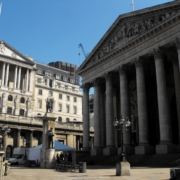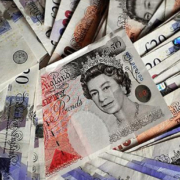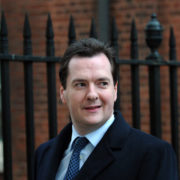In September of last year, I placed this article up on our web site detailing the theoretical errors behind the policy of quantitative easing. Clearly, as the MPC has now been given the green light by our chancellor, we expect this currency debasement to be starting soon. All it will “achieve” is a wealth transfer from those lucky enough to get the newly minted money, from those not luckily enough. I aimed to expose the faulty crank-economics that lies behind such thought processes last year and did not think a Tory government would be so foolish to let this happen under their watch, especially as they condemned it under a Labour government. Sadly, articles like this one need to be reproduced so that a new set of readers can hopefully have influence on the present administration.
The mainstream economists hold that the volume of money in circulation, times its velocity is equal to the prices of all goods and services added up. This is the famous Theory of Exchange,MV=PT, or the mechanistic Quantity Theory of Money, where:
- M is the stock of money,
- V is the velocity of circulation: the number of times the monetary unit changes hands in a certain time period,
- P is the general price level,
- and T is the “aggregate” of all quantities of goods and services exchanged in the period.
It is held by the overwhelming majority of all economists, that if the velocity of money falls, the price level will fall and thus it is the duty of government, the monopoly issuer of money, the chief Central Planner of the Money Supply, to create more money to keep the price level where it is and thus preserve the existing spending habits of the nation.
Error One — the stock of money
It is held that if you can count the monetary units in the economy and their velocity, you can say what the price level is. As people find it very difficult to count the money in an economy, they cannot see the statistical relationship showing up mechanistically in the price level as expected: the authorities do not have a measure of the money supply which correlates to economic activity.
Working from a sound theoretical basis, I and my colleague Anthony Evans can show you how to count money exactly and how that measure of the money stock correlates to economic activity:
![UKMoneyStocks[1]](http://109.104.118.106/~toby/wp-content/uploads/2013/07/UKMoneyStocks1.png) Note that changes in the mainstream measures — M0 and M4 — are quite different to changes in our measure — MA. However, it is MA which shows the best correlation to economic activity and not the measures used by the Bank of England and HM Treasury:
Note that changes in the mainstream measures — M0 and M4 — are quite different to changes in our measure — MA. However, it is MA which shows the best correlation to economic activity and not the measures used by the Bank of England and HM Treasury:
![MAvsGDP[1]](http://109.104.118.106/~toby/wp-content/uploads/2013/07/MAvsGDP1.png)
![MAvsRetail[1]](http://109.104.118.106/~toby/wp-content/uploads/2013/07/MAvsRetail1.png) The monetary authorities do not have an adequate measure of the money supply.
The monetary authorities do not have an adequate measure of the money supply.
Error Two — the velocity of circulation
Velocity is defined as the average number of times during a period that a monetary unit (I will call this MU) is exchanged for a good or service. It is said that a 5% increase in money does not necessarily show itself up with a 5% increase in the price level. It is argued that this is because the velocity of money changes. The trick is to measure by how much the velocity has declined and then create new money — cross your fingers, pray to the Good Lord, do a rain dance around a fire, and hope that the new money will be spent — to fill in this gap left by the fall in velocity.
When you buy a house, we do not say it “circulates”: money is exchanged against real bricks and mortar. The printer who sold me books would have had to sell printed things (i.e. real goods) and saved (forgone consumption) for the future purchase (act of consumption) of the house. Imagine selling your house backwards and forwards between say you and your wife 10 times: the mainstream would argue that the velocity of circulation had risen!
Yes as daft as it sounds, this is the present state of economics.
Thus, if the velocity has gone up by a factor of 10, the price level has increased by the same factor. Here is the suggested rub: therefore, when the velocity of circulation falls, if you increase the money supply by the same factor that the velocity of circulation has fallen by, the price level will stay the same.
Note, as explained above and in detail here, the mainstream do not actually know what money is. Well, let us be clear: it is the final good for which (all) other goods exchange. All of us who are productive make things for sale or sell services, even if it is only our own labour. We sell goods and services which we produce or offer for other goods and services we need. The most marketable of all commodities, money, is accepted by you and other citizens and facilitates exchange of your goods and services for other goods and services. Note that, at all times, money facilitates the exchange of real goods for other real goods.
Party one and a counterparty exchanging or “selling” the house between one another 10 times causing an “increase in velocity” and thus an increase in the price level as an idea is utter garbage. If one party had sold real goods and saved in anticipation of buying the house — real bricks and mortar via the medium of money — this would facilitate a transaction of something (the party’s saved real goods) for something (the counterparty’s real house). Printing money to make sure the price level stays stable to facilitate the “circulating” house in the first example will facilitate a transfer of nothing (the paper) for something (the house). This is commonly called counterfeiting.
This may be another helpful example of why velocity is utterly meaningless. Consider a dinner party: Guest A has a £1. He lends it to Guest B at dinner, who lends it to Guest C who lends it to Guest D. If Guest D pays it back to Guest C, who pays it back to Guest B pays Guest A, the £1 is said to have done £4’s worth of work. The bookkeeping of this transaction shows that £1 was lent out 4 times and they all cancel each other out! Just to be clear, £1 has done £1’s work and not £4’s work. No real wealth or value is created.
The velocity of circulation makes no economic sense.
Error Three — the general price level
Since the monetary authorities have no means to sum the price and quantity of every individual transaction, they must work instead with the “general price level”, ignoring the vital role of changes in relative prices.
As early as 1912, Ludwig von Mises demonstrated that new money must change the structure of relative prices. As anyone who has lived through the past year could tell you, new money is not distributed equally to everyone in the economy. It is injected over time and in specific locations: new money redistributes income to those who receive it first. This redistribution of income not only alters people’s subjective perception of value, it also alters their weight in the marketplace. These factors can only lead to changes in the structure of relative prices.
Mainstream economists believe that “money is neutral in the long run”. They do not have a theory of the capital structure of production which can account for the effects of time and relative prices. They believe increases in the money supply affect all sectors uniformly and proportionately. This is manifestly untrue: look at changes in the Bank of England’s balance sheet and your bank statement.
Hayek wrote that his chief objection to this theory was that it paid attention only to the general price level and not to the structure of relative prices. He indicated that, in consequence, it disregarded the most harmful effects of increasing the money supply: the misdirection of resources and specifically unemployment. Furthermore, this wilful ignorance of relative prices explains the mainstream’s lack of an adequate theory of business cycles, something Hayek provided.
The general price level aggregates away a vital factor: the relative structure of prices.
Error Four — the aggregate quantities of goods and services sold
Since the sum of price times quantity for every individual transaction is not available, the authorities must use the “aggregate quantity of goods and services sold”. This is nonsense: the quantities to be added together are incompatible. It makes no sense to add a kilogram of potatoes to a kilogram of copper to a litre of petrol to a day’s software consultancy to a 30-second television advert.
The aggregate quantity of goods and services sold is an impossible sum.
Error Five — the equation is no more than a tautology
Consider this, if I buy 10 copies of Adam Smith’s Wealth of Nations from a printing company for 7 monetary units (or MU), an exchange has been made: I gave up 7 MU’s to the printer, and the printer transferred 10 sets of printed works to me. The error that the mainstream make is that “10 sets of printed works have been regarded as equal to 7 MU, and this fact may be expressed thus: 7 MU = 10 printed works multiplied by 0.7 MU per set of printed works.” But equality is not self-evident.
There is never any equality of values on the part of the two participants in exchange. The assumption that an exchange presumes some sort of equality has been a delusion of economic theory for many centuries. We only exchange if each party thinks he is getting something of greater value from the other party than he has already. If there was equality in value, no exchange would happen! Value is subjective and utility is marginal: each party values the other’s goods or services more highly than their own.
Thus, while the mainstream believe that there is a causal link between the “money side” of the equation and the “value of goods and services side”, it is just a tautology from which no economic knowledge can be gained. All we are saying, if the Quantity Theory holds, is that “7 MU’s = 10 sets of printed works X 0.7 MU’s per set of printed works”: in other words, “7 MU = 7 MU”. Thus what is paid is what is received. This is like announcing to the world that you have discovered the fabulous fact that 2=2.
The mechanistic Quantity Theory of Money is not a causal relation but a tautology.
Conclusion
The mechanistic Quantity Theory only provides us with a tautology and every term of “MV = PT” is seriously flawed. Public policy should not rest on the foundation of this bad science.
If the money supply contracts as it has done so spectacularly since late 2008 (see the chart above), you will have less goods and services supporting less economic activity. This for sure is bad. We now have less money and less exchanging of real goods and services for other real goods and services.
The only way to get more goods and services offered for exchange is if entrepreneurs get hold of their factors of production — land, labour and capital — and reorganise them to meet the new demands of the consumers in a more efficient way than before. The only thing that the government can do is to make sure it provides as little regulatory burden as possible and the lightest tax regime that it can run in order to allow entrepreneurs to facilitate this correction.
Certainly in my business of the supply of fish and meat to the food service sector —www.directseafoods.co.uk — I have never witnessed such an abrupt change in consumption patterns as people have traded down from more expensive species and cuts to less expensive ones. Thus I have to reorganise my offer to my customers and potential customers. No amount of fiddling about with the level of newly minted money in the economy will help this reorganisation of my factors of production: they need to be retuned to the new needs and desires of my customers.
Quantitative easing, as I have said before, is firmly based on a belief in the so called “internal truths” held in the Quantity Theory of Money. I hope any reader can see that this belief is based on very faulty logic. Bad logic gives us bad policy. A policy of QE says that because the velocity of circulation has fallen, we can print newly minted money, out of thin air, at the touch of a computer key, and create more demand for the exchange of goods and services.
Money has been historically rooted in gold and silver because these cannot “vanish” overnight as we are seeing under our present state monopoly of money — fiat money, money by decree, i.e. bits of paper we are forced to use as legal tender. Remember, since 1971 when Nixon broke the gold link, money is just bits of paper, notwithstanding a promise to pay the bearer on demand. In the near future, this will no doubt remain the case. Indeed, anyone who dares to mention that the final good, for which all goods exchange, should be a real good that is scarce (hard to manipulate it, hard to destroy it) unlike paper and electronic journal entries (easy to manipulate, easy to destroy) is considered a lunatic!
On a point of history, it is worthwhile remembering that, as we have mentioned here, the 1844 Peel Act did remove the banks’ practice of issuing promissory notes (paper money) over and above their reserves of gold (the most marketable commodity i.e. money) as this was causing bank runs, “panic”, boom and bust. They did not resolve the issues of demand deposits to be drawn by cheque. Both features allow banks to issue new money — i.e. certificates that have no prior production of useful economic activity such as our printer printing books or my selling of meat and fish — while retaining real money — claims to the printing of books and selling of my meat and fish — only to a percentage of the deposited money, i.e. the Reserve Requirement of the bank. In the UK, there is no Reserve Requirement anymore as far as I am aware, hence banks going for massive levels of leverage. It is no surprise that the house of cards has fallen down.
Our proposal for a 100% reserve requirement is offered for discussion as the only sure-fire way of delivering lasting stability. Listening to economists talking about the “velocity of circulation” falling and thus suggesting that we should conduct large scale Quantitative Easing to hold the price level is not economics, but the policy of the Witch Doctor and the Mystic.
It is staggering that so much garbage, posing as sound knowledge, hinges on these grave errors.
Further reading



![UKMoneyStocks[1]](http://109.104.118.106/~toby/wp-content/uploads/2013/07/UKMoneyStocks1.png)
![MAvsGDP[1]](http://109.104.118.106/~toby/wp-content/uploads/2013/07/MAvsGDP1.png)
![MAvsRetail[1]](http://109.104.118.106/~toby/wp-content/uploads/2013/07/MAvsRetail1.png)




